GARDINER — The cupolas that distinguish the roof line of 18 Dennis St. are a puzzle for Brett Trefethen.
Getting them off the low two-story building would be hard and probably require a crane truck.
Trefethen has salvaged wood from 20 barns, and he’s never managed to get a cupola. On barns, they are used for ventilation. The Dennis Street house, which was built more than a century ago as a carriage house, has two purely for decoration.
“I have been going back and forth on those cupolas,” Trefethen said last week, while his crew was taking a break from salvaging wood and architectural features from the Dennis Street building before its planned demolition.
“If I can locate a buyer, I will do it, because then it makes more sense to rent the crane truck,” he said.
That can cost hundreds of dollars, but a well-built cupola that’s more than a century old can command thousands of dollars.
Without the crane truck, Trefethen has made a small investment in the project.
In December, the Gardiner City Council approved the sale of salvage wood and architectural salvage from the building to Trefethen. He and his wife, Amy Grant-Trefethen, own Barn Boards and More, a company that dismantles barns and uses that reclaimed wood to make furniture.
Trefethen’s work is sandwiched between the scheduled hazardous materials abatement and the city-owned building’s demolition that is expected to take place this winter.
The demolition will end repeated attempts by city officials to find someone interested in buying the carriage house and fixing it up.
The city of Gardiner acquired the property in 2010 for unpaid taxes and sewer fees of nearly $32,500. City Manager Scott Morelli said the property had attracted several offers, but none of them worked out and that drove the decision to demolish.
“You can’t save everything,” Trefethen said, standing in the building last week. But sometimes, he said, you can save some things, and pieces of history can live on.
A PIECE OF HISTORY
In this case, the history is a classic American success story based in Gardiner.
The carriage house is what’s left of the Frank Boston estate.
When Boston bought the lot at the corner of Dennis and Vine streets in 1902, the neighborhood was already well established. Laura Richards, who would win the Pulitzer Prize 15 years later for the biography she wrote of her mother, Julia Ward Howe, had at that point lived on Dennis Street for 25 years. Not far from there, Caroline Davenport Swan lived in her family home on School Street. Most homes were built in the mid- to late-19th century.
“He’s moving into one of the finer neighborhoods overlooking the Kennebec River,” Dawn Thistle, special collections librarian at the Gardiner Public Library, said.
Thistle, who has researched family histories in the library’s Archives Room, pieced together an outline of Boston’s life from official records, news clippings and the occasional scrap book that has been donated to the archive collection.
There are conflicting accounts of when Boston went to work for the Hollingsworth and Whitney Paper Company. In one, Boston was only 10 in 1865 when he went to work in the mills on the Cobbosseecontee Stream, the sole support of his widowed mother, Sarah Pincin Boston. His father, Calvin Boston, who had enlisted in the 7th Maine Volunteer Infantry Regiment to fight in the Civil War, was killed in Petersburg, Virginia, just as he was about to be promoted from lieutenant in I Company of the 31st Maine Infantry to captain. During the war, Frank Boston’s younger brother Fred also died. Another account indicates he was 23 when he started working for Hollingsworth and Whitney.
No matter when he started, he built a career of increasing responsibility with the company in Gardiner, except for a short stint managing the company’s small paper mill in South Braintree, Massachusetts. He and his wife, Florence, settled in a house on Brunswick Avenue while he continued his rise through company management. Eventually, he became general manager, supervising the company’s mills and timber land, and he assumed a number of civic responsibilities and was a vice president of the Gardiner Board of Trade.
It’s about that time that he bought the land and built a shingle style home with a carriage house designed by the prolific Maine architect John Calvin Stevens. Boston lived there with his family until he died in 1922. His wife, Florence Boston, lived in the home until her death in 1935.
City records show the changes that came to the property during Boston’s life and in the decades after, namely the addition to the carriage house’s west end and the change of use from a carriage house into an auto house. Through those years, residential space was developed in the east end of the 4,750-square-foot building, and that’s where Frank Boston’s son Fred Boston lived for several years before his mother’s death.
It’s not clear what exactly happened after that. Fred Boston may have lived in the big house for a while, and at some point the house and carriage house may have been rented out to tenants.
But it is clear that in 1939, economic conditions and the cost of maintaining the stately home became too much, and it was torn down.
NEW LIFE FOR OLD WOOD
The story of the carriage house is told in what Trefethen and his crew have been uncovering.
It’s now uninhabitable and water had a lot to do with that.
“I am not sure what happened,” he said.
The evidence of roof leaks shows up in buckled ceiling tiles and wavy and peeling wallpaper and the mildew marking the beadboard ceilings on the first floor. Trefethen said storm runoff traveling downhill on Dennis Street has undermined the foundation.
Early in the week, a set of blueprints were discovered in a wall that show the renovations that were completed in the 1950s that resulted in the carriage house having 13 rooms and half a dozen bathrooms and, oddly, a rotisserie built into a chimney in a room that appears to have been used as a den.
Trefethen is more interested in the materials that predate that era, which includes some interior beadboard, historic windows and doors, cedar paneling from closets, the cupolas and the boards in the roof and the basement. He’s also interested in a couple of registers from the second floor master bedroom, but the crew is less enthusiastic — they weigh several hundred pounds each.
“There’s a lot more salvageable material,” he said, “but accessibility is the problem.”
Whatever is pulled out of the Dennis Street house is headed to the Barn Boards and More warehouse at 521 Water St. that borders the Cobbosseecontee Stream, which is on schedule to open in a few weeks once renovations are complete. In a coincidence that seems inevitable, it’s the site of a former Hollingsworth and Whitney Paper Company warehouse.
And some of what’s been pulled out of the Dennis Street house is likely to end up as furniture for the Barn Boards and More Studio, which relocated last year from Hallowell to 343 Water St. in Gardiner. There have been discussions of using some of it for tables for the library’s Archives Room.
For Gardiner, which has been looking for ways to capitalize on its history and heritage as well as arts and culture, the loss of this particular building gives a boost to an enterprise of “makers.”
“This fits into both categories as we define the future of Gardiner’s economy and well-being,” Patrick Wright, executive director of Gardiner Main Street said. “We’re delighted that Barn Boards and More found a home here. We are looking forward to working with them and seeing how their business helps define Gardiner.”
Jessica Lowell — 621-5632
Twitter: @JLowellKJ
Copy the Story LinkSend questions/comments to the editors.

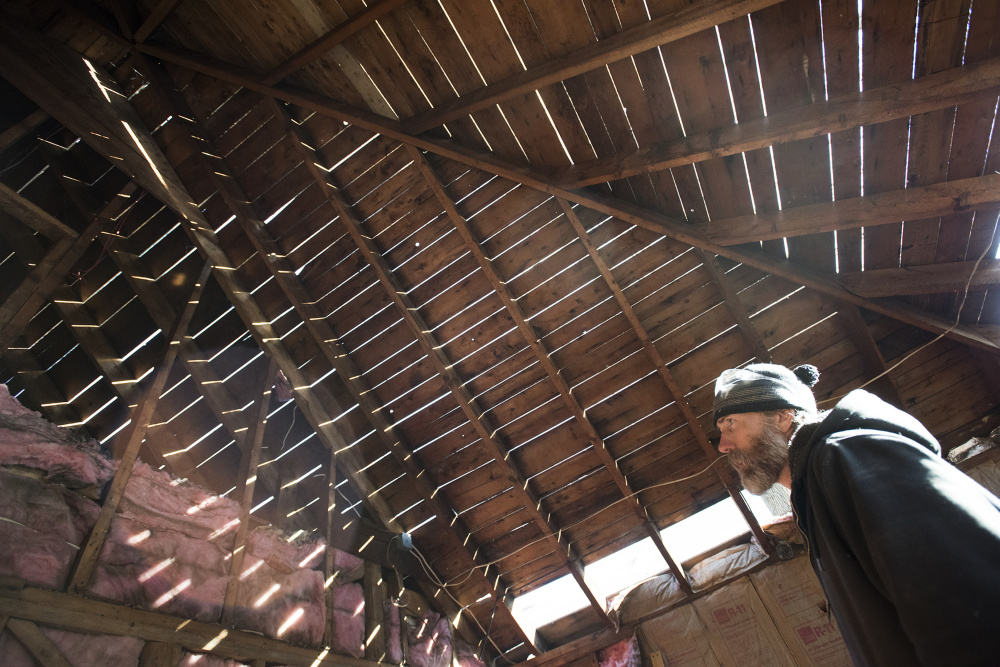
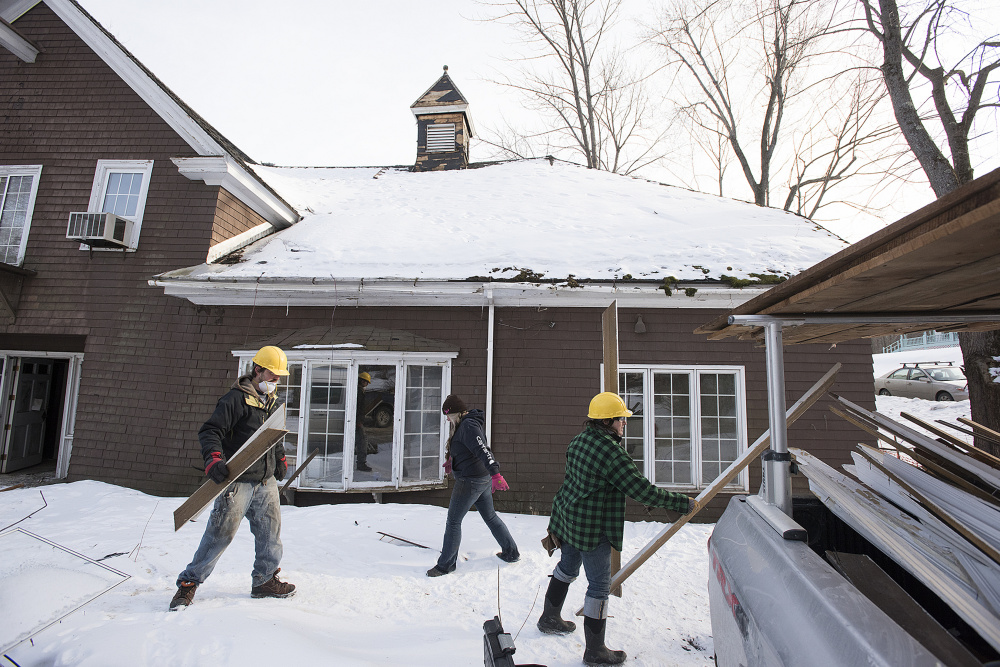
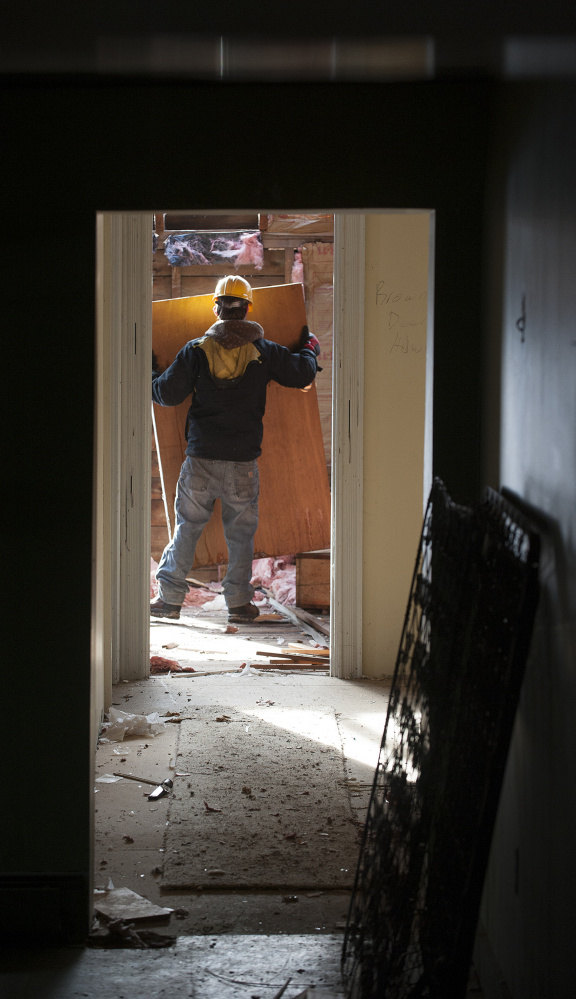

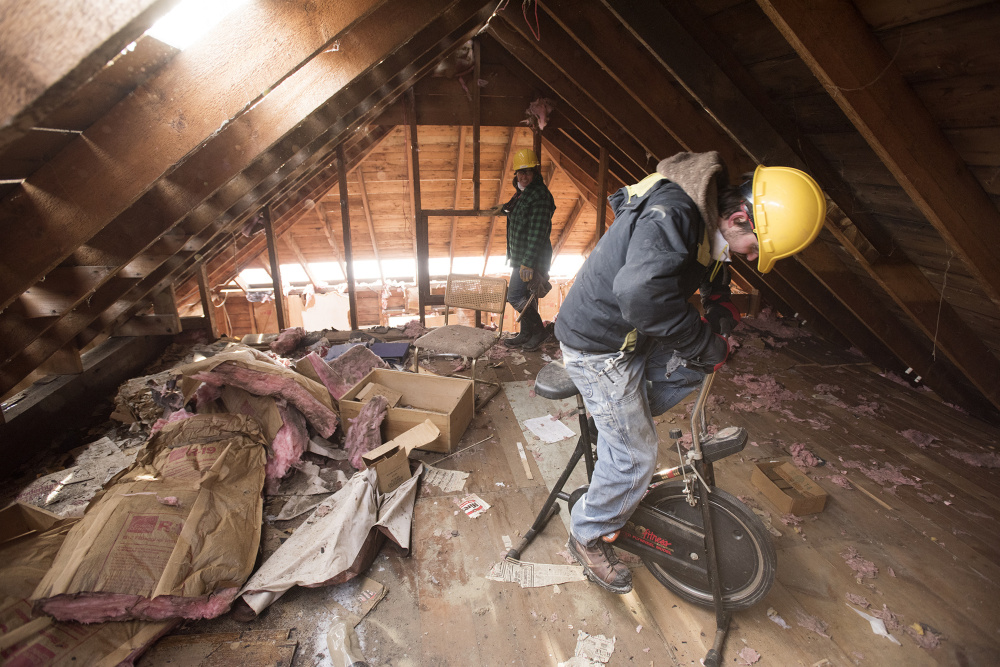
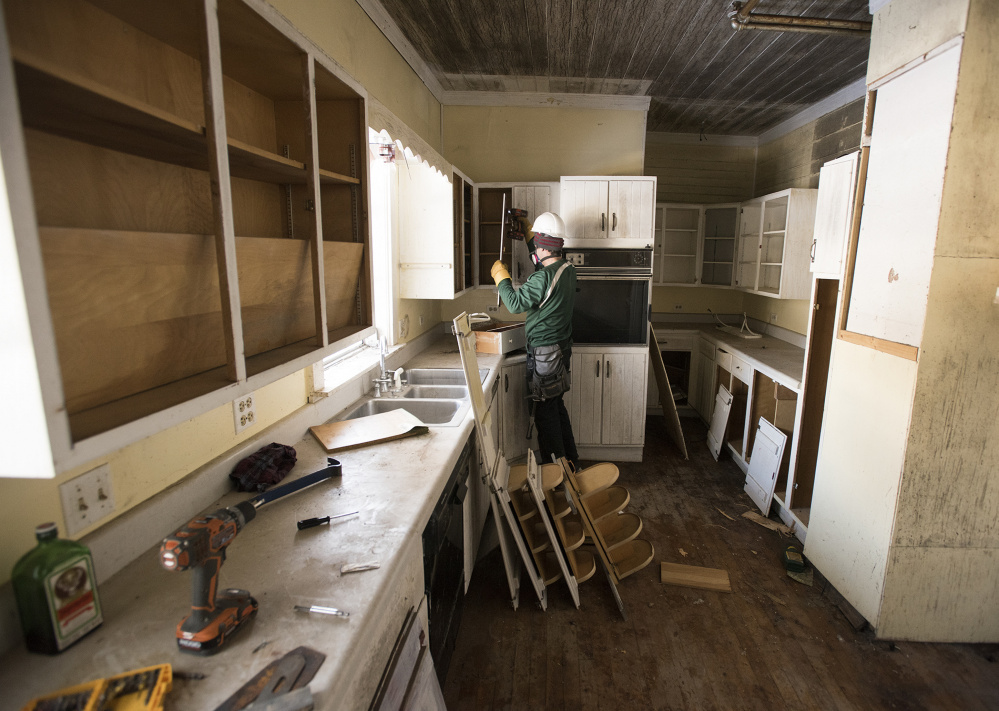
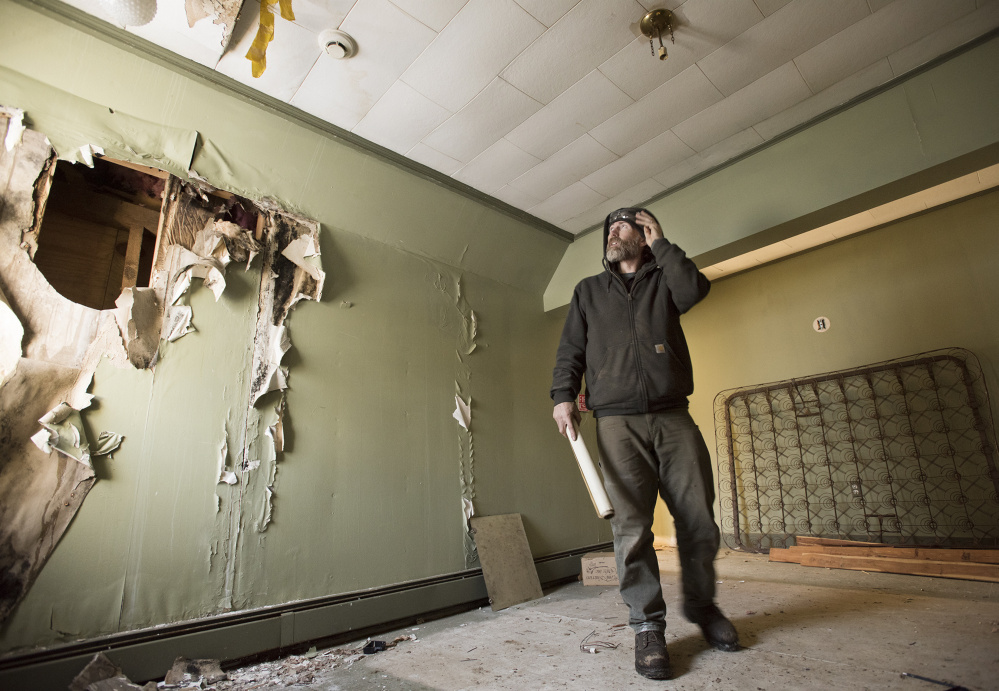
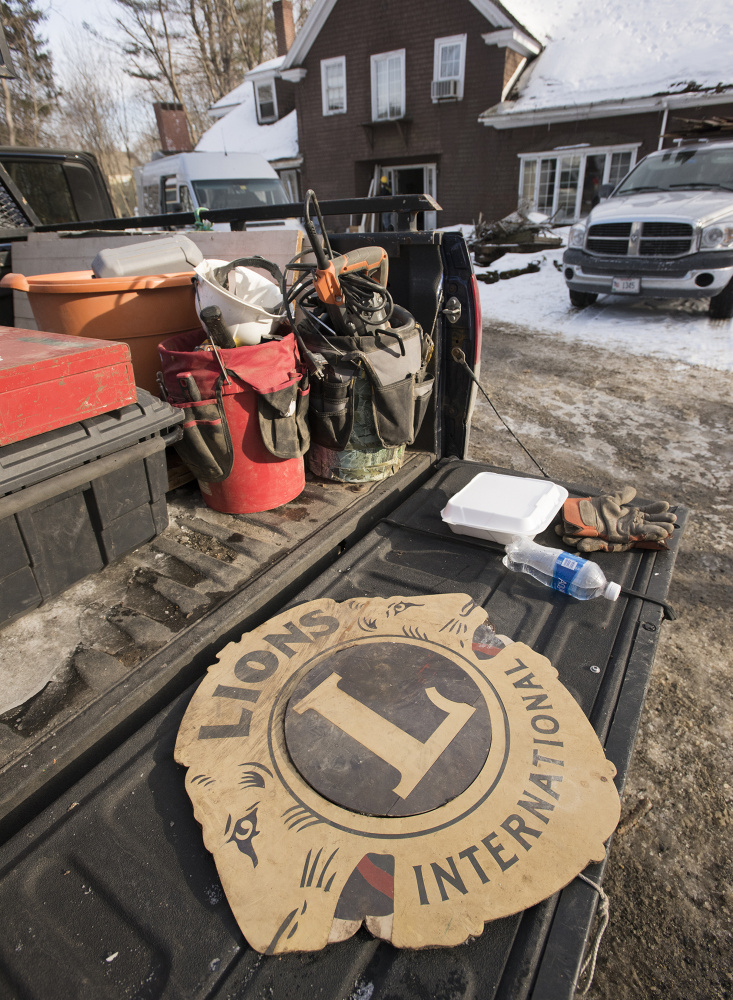
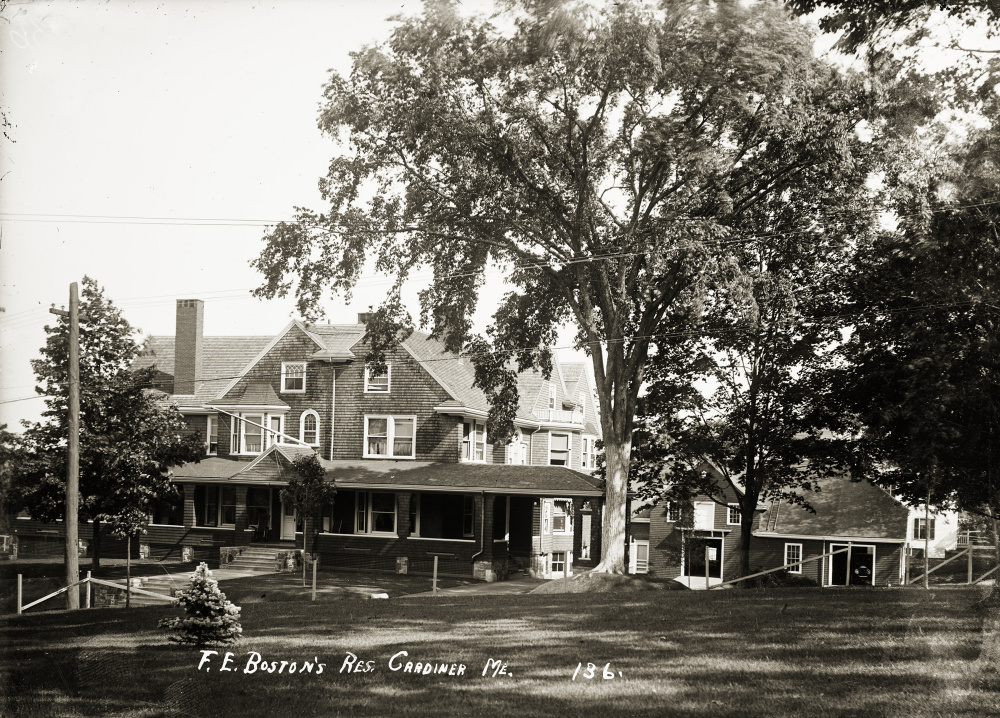

Success. Please wait for the page to reload. If the page does not reload within 5 seconds, please refresh the page.
Enter your email and password to access comments.
Hi, to comment on stories you must . This profile is in addition to your subscription and website login.
Already have a commenting profile? .
Invalid username/password.
Please check your email to confirm and complete your registration.
Only subscribers are eligible to post comments. Please subscribe or login first for digital access. Here’s why.
Use the form below to reset your password. When you've submitted your account email, we will send an email with a reset code.